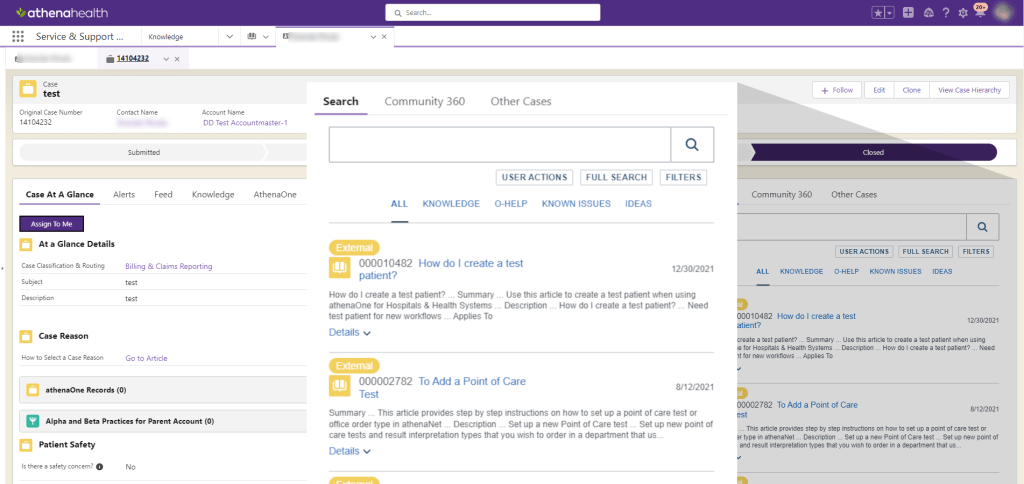If one thing became clear about 2024 during my conversations throughout last week’s CCW Emerging Tech conference, it’s that this will be the year for leading enterprises to take action on GenAI.
For many companies, and their leaders, last year was a bit of a wait and see approach. Like many groundbreaking innovations, 2023 saw more than a few companies try to grab the GenAI wave early and ride it to success. There were some spectacular failures. There were also companies who quickly tasted GenAI success.
But GenAI wasn’t the only type of AI that service and support leaders are seeking out to upgrade their function in 2024. Enterprises are actively looking at a broad range of AI-powered solutions to help them meet strategic goals for customer experience quality, agent engagement, and cost efficiency.
Through hundreds of conversations, numerous presentations, and a few oat sodas, three themes kept bubbling up.
1. Self-Service Effectiveness is a Primary goal for 2024
And this time, there is truly a market driven need to make significant progress. Coveo’s latest research shows that the majority of customers are ready to abandon brands after poor digital experiences. Customer self-service has been a top priority for well over a decade in the support function. After all, nearly two-thirds of customers prefer to self-serve, plus it’s far more cost-effective to help a customer solve a problem on their own. So a complete win-win.
However (you knew that was coming), 49% of self-service failure is due to “findability” issues. That becomes less surprising when you consider that a whopping 88% of customers that begin their journey in self-service wind up touching multiple channels. A disconnected experience is a poor foundation for customer satisfaction.

This is a problem that AI-powered search and recommendations is squarely suited to solve. As long as that search is driven by mature relevancy models, which can take contextual customer information into account, you will see significant improvements in self-service success. On average, Coveo customers see a 55% increase in self-service resolutions.
During the conference, I led a workshop for 80 support leaders on how to build a connected and personalized self-service experience with AI. Interestingly, but not surprising, utilizing search as a primary way to get customers the information they seek was overlooked by many in the room. But think about it, when you need information from the internet today, what do you do? You Google it. Watching seasoned service leaders have a “V-8 moment” never gets old.
2. GenAI investment isn’t happening unilaterally
There were few sessions at this conference that didn’t include GenAI in some way, shape, or form. As I mentioned at the top, 2024 will be the year of GenAI Operationalization. But many of the companies that we spoke with are unsure of how and where to invest. There’s still a fair amount of skepticism. Leading organizations are centralizing decision making by forming AI Committees made up of leaders from varying functions. These committees are not solely responsible for identifying AI solutions, but rather acting as an aggregator, with business functions bringing use cases and recommended solutions providers for review and harmonization to overall AI strategy.
While this approach might slow down time to deployment, it helps leading businesses avoid the trap of siloed investments creating inconsistent (or, worse, contradictory) customer experiences. Leaders were overwhelmingly seeking out companies with a platform approach to their AI capabilities.
The majority of companies we spoke with were planning on implementing some type of GenAI capability in 2024. They were split between an investment in self-service channels, agent assist, or both. Those focused on agent assist discussed plans to test and learn with GenAI “in-house” first before exposing answers directly to customers. Not surprisingly, there were a few folks who fell into the laggard category with no plans to get into GenAI ini 2024. For these skeptical folks, the biggest reasons for non-investment were concerns over data security and privacy.
3. Support Leaders are Seeking Connected Experiences
As mentioned, most self-service contacts wind up engaging with the company in multiple channels. And while customers are decidedly digital-first, that doesn’t mean they are digital-only. This comes as a relief to service leaders, because we know that not every issue can be solved in self-service channels, nor should it be. Assisted channels allow for deep and personalized engagement that can drive tremendous value for the customer.
But, those value-creating moments will be completely ignored should customers be forced to start all over again when moving from a self-service to assisted experience. In fact, Gartner found that there is a 23% decline in CES and CSAT on average when customers must repeat information. This is why many companies we spoke with were seeking to deliver a more connected experience.
What does this look like? Giving agents contextual information — such as the customer’s recent digital behavior, like search queries — to help pick up the conversation where the customer left off. Agents are also alerted to content (documents, articles, videos) that the customer has already seen, so they can ask better questions like “I know you’ve been looking at X, what can I answer for you about that?” versus a generic and frustration inducing “How can I help you?”

It’s always great to get together with service leaders, and help them tackle their biggest challenges. If you’d like to discuss any of the topics above, or any service related questions, we’d love to connect.
Dig Deeper
Generative AI (GenAI) has become a critical capability that service leaders must consider adding, lest they fall behind competitors. This report shows that adding GenAI capabilities is easier than companies might think.


